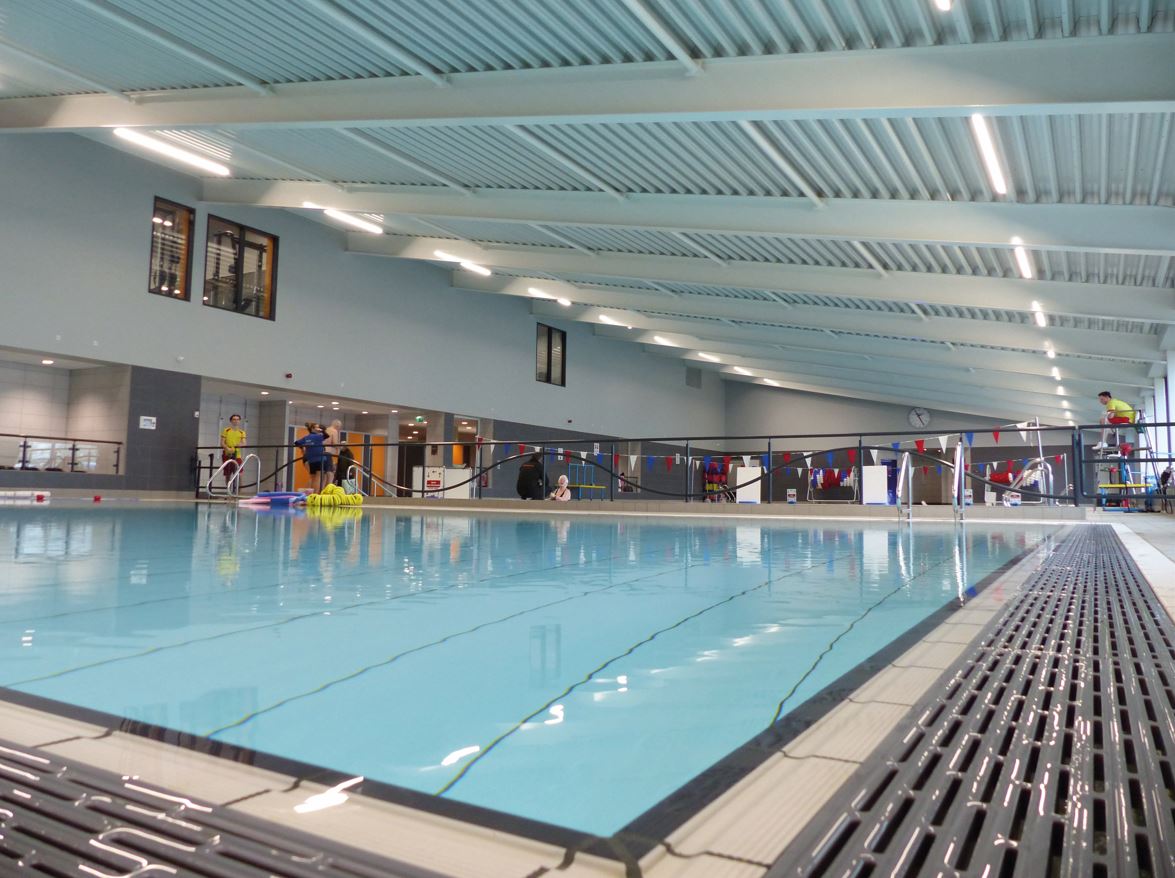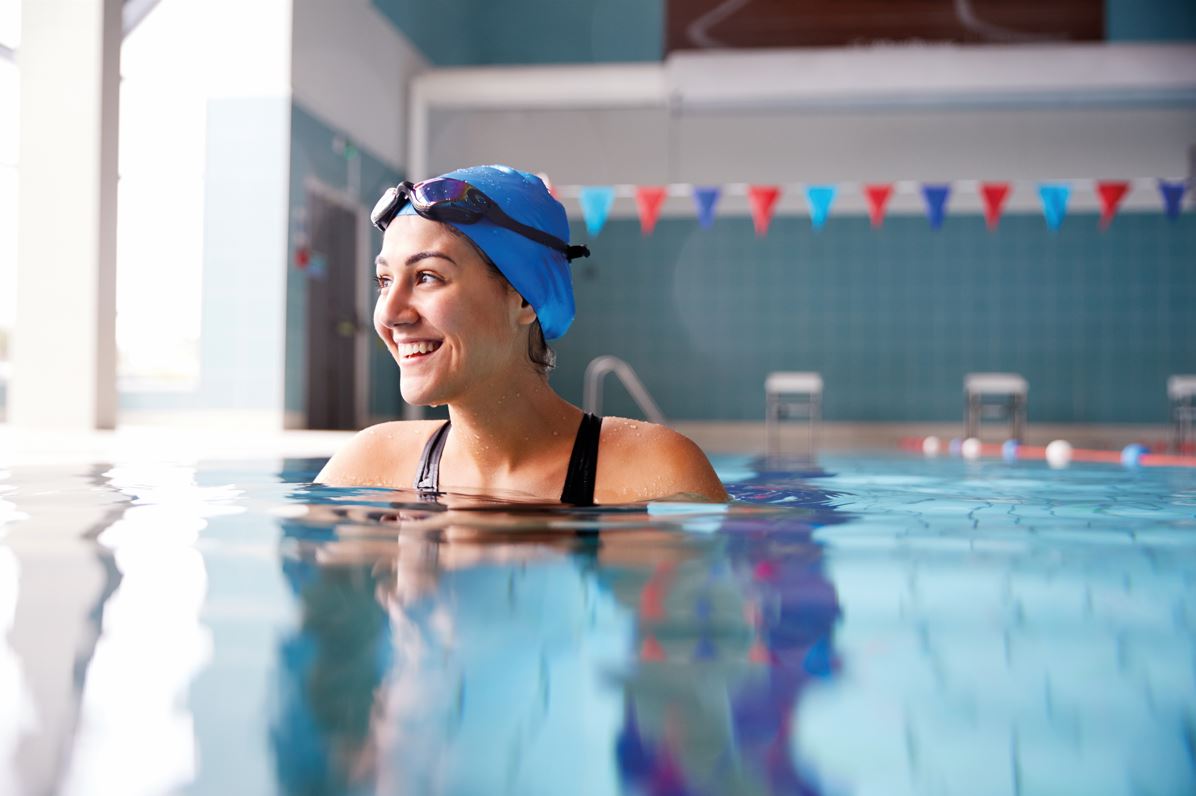
Indirect lighting has long been the preferred solution for commercial pools, but new technology means direct lighting is now a viable alternative, says Adam Clark, GM of Golden Coast.
Finding the right lighting for a swimming pool is a significant challenge. Glare and reflection on the water surface must be minimised so that both swimmers and lifeguards have good visibility in the water. Professionals working on pool projects still perceive indirect lighting as the ideal for commercial pool halls, but this is a potentially outdated view. Why? Because new, cost-efficient direct lighting technology offers another option, one which should be considered when making lighting recommendations and selections for new build, renovation and relighting projects.
out with the old
Well-known guidance from industry authorities encourages the use of indirect lighting in pool halls. However, this notion is based on the use of old technology that utilised high levels of concentrated light. Because of this, indirect lighting (where light is emitted upwards away from the pool water) was deemed the preferred option to avoid significant glare and surface water reflection. With the ongoing use of powerful LED lights this guidance still prevails today. But thanks to advances in technology, direct LED lighting solutions like those from Dutch company EVA Optic are being installed in hundreds of pools around the world. Unlike indirect lighting, EVA Optic lights are typically positioned around the perimeter of the pool to shine directly down over the water. Designed to significantly reduce glare and water surface reflection, EVAline lights are angled to get the required light into the middle of the pool. The angle never exceeds 30° from vertical. By doing this, the angle of incidence of light reaching the pool water surface is low to eliminate the risk of reflected glare and ensure maximum use is made of the light available. All products in the range have a Unified Glare Rating of less than 19 due to a microprism cover that ensures powerful yet glare-free light. The LED lighting provides a safer pool environment, as there is minimal reflection on the pool’s surface, giving better visibility into the water.
see clearly from every angle
When a new pool is built, several risk assessments and procedures are conducted to ensure it is as safe as possible. This includes a Lifeguard Zone Visibility Test (LZVT) to determine how many lifeguards are required and the best positions for them. During the LZVT, the pool is divided into 2sqm sections. A manikin is placed in each square under the water, and the lifeguard will record if the manikin can be seen from their position. This exercise identifies areas of the pool where lifeguards do not have 100 per cent visibility. Lighting is one of the main causes of poorvisibility and indirect lighting in particular can create large reflective areas on the water, hampering a lifeguard’s view. The more reflective areas there are on a pool, the more lifeguards are needed to ensure that the pool is monitored from every angle, meaning higher staff costs for the facility. Indirect lighting can also distract lifeguards when sitting in an elevated chair - they are often looking directly into the light source and the glare can seriously impact their vision. By contrast, the use of direct lighting means there are no concentrated light spots, as the lights use less power than older technology equivalents. EVAline lights are never more than 120w and spread over a far bigger emitting surface area per watt of light than a floodlight; the difference could be as much as 80 per cent. By installing relatively low powered lights in a linear arrangement, the EVA Optic lights do not represent any significant measurable risk of direct glare. This allows lifeguards to observe the whole pool comfortably and effectively for maximum safety.
shining examples
EVA Optic LED lighting has been installed in several leisure centres in the UK. At Waltham Abbey Leisure Centre in Essex, 26 EVAline LED lights were chosen for the large pool hall, which comprises a 25m pool and a 15m learner’s pool. When designing the 807sq m space, the direct lighting was predicted to require just 2760 watts compared to almost twice that for indirect lighting at 5265 watts. Over 50,000 hours, direct lighting was therefore set to save the operator £18,000 on electricity bills. “The light is very evenly distributed and the Lux level tests back this up. Visibility into the water is therefore very good, and our underwater cameras confirm that. The EVA lights are also low maintenance. Since they were installed in 2018, we haven’t had to touch them,” says Chris McCarthy, general manager of the centre. At Surrey’s Egham Orbit Leisure Centre, we provided 40 Aqua LED modular lights in the main 25m pool hall, 39 EVAline downlights in the learner pool and splash zone, and 20 EVAline downlights in the hydro pool area and surrounding walkways. Within the 708sq m pool hall, the direct lighting consumes 2400 watts on average, compared to indirect lighting which would require 8640 watts - more than three times the amount. This represents a £42,000 energy cost saving over the 50,000 hour lifespan of EVA lights. “The lights are not halogen bulbs, so there’s an instant saving, which is brilliant for our electricity costs. I feel the lighting adds real character to the pool hall. Logistically, the layout provides brilliant coverage whilst taking a certain element of glare away from the pool,” says Will Midmore, group operations manager
at Egham Orbit. “There are no reflections on the water, which is a major benefit in the pool hall. This means there are also no light spots on the water, which can hamper a lifeguard’s ability to monitor the whole pool. The good visibility into
the water means the pool is safer, as lifeguards can easily scan from their position.” Industry guidelines state that light levels must be minimum 300 Lux, with an illumination uniformity value of 0.7 or higher. Despite the lower wattage, EVA lights are extremely powerful and can easily exceed all minimumrequirements. At Waltham Abbey, the lighting design delivers 321 Lux on average and a light uniformity of 0.74. At Egham Orbit, EVA Optic lights average 320 Lux and a uniformity of 0.77. Not only are EVA Optic direct lights energy efficient, they are more effective at providing constant light output at exceptional levels long-term. As such, they offer a quality and reliability that will stand the test of time. EVA Optic LED lighting is distributed in the UK by Golden Coast.
